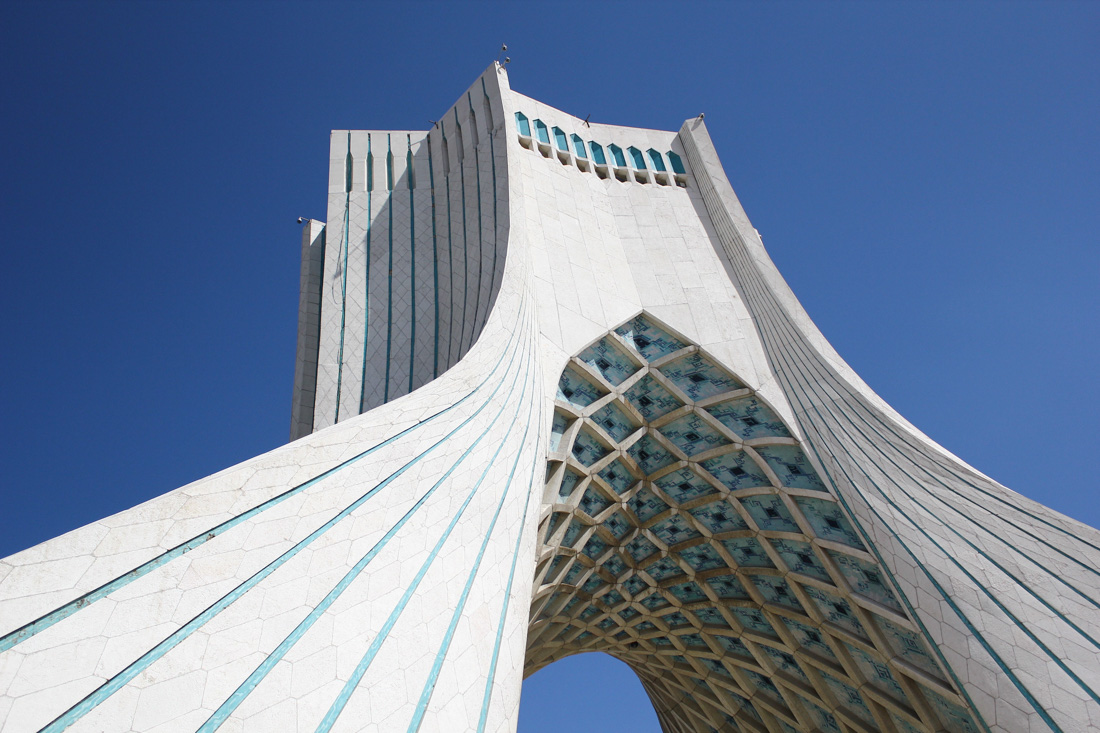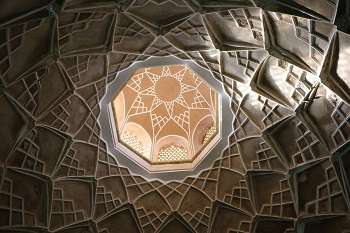Heading to Iran? As an exciting destination, it's renowned for its beauty, culture, food, and exciting activities. Our travel cost guide will help you plan an epic vacation without overspending. We've got all the essentials, from average hotel rates to dining and entertainment costs. All of the travel expenses are from real travelers, so you can travel smart and have an amazing trip.
How much does it cost to travel to Iran?
A typical traveler spends $63 (﷼2,669,103) per day on a trip to Iran. This is the average daily price for a vacation in Iran based on the expenses of other visitors.
Past travelers have spent, on average for one day:
- $13 (﷼566,947) on meals
- $1.92 (﷼80,803) on local transportation
- $87 (﷼3,655,012) on hotels
A one-week trip to Iran for two people costs, on average, $888 (﷼37,367,442). This includes accommodation, food, local transportation, and sightseeing.
All of these average travel prices have been collected from other travelers to help you plan your own travel budget.
Independent Travel
Traveling Independently has many benefits including affordabilty, freedom, flexibility, and the opportunity to control your own experiences.
All of the travel costs below are based on the experiences of other independent travelers.
Is Iran expensive to visit?
Iran is a reasonably affordable destination to visit. It is in the top 25% of countries in the world for its affordability. If you're traveling on a budget, then this is a good destination with affordable accommodation, food, and transportation.
Within the Middle East, Iran is reasonably affordable compared to the other countries. It is in the top 25% of countries in the Middle East for its affordability. You can find more affordable countries such as Syria, but there are also more expensive countries, such as Oman.
In Iran, budget travelers spend $24 (﷼1,025,877) per person per day on average, mid-range travelers spend $63 (﷼2,669,103) per day, and luxury travelers spend around $170 (﷼7,166,929) per day. These costs are calculated from the expenses of previous travelers to Iran.
From budget-friendly stays to high-end hotels, Iran has something to offer every traveler with different spending habits and travel preferences. You can find budget-friendly hostels in Tehran, while luxury hotels cater to those seeking opulence, with mid-range hotels also available for families and couples.
Iran has a reputation for being expensive, but there are simple ways to make it affordable, like eating at less expensive restaurants and enjoying free activities.
For more details, see Is Iran Expensive?
How much money do I need for a trip to Iran?
The average Iran trip cost is broken down by category here for independent travelers. All of these Iran travel prices are calculated from the budgets of real travelers. Also, you can see more details at How much does a trip to Iran cost?
Iran on a Budget
|
Category
|
Budget
|
Mid-Range
|
Luxury
|
Accommodation1
For 1 person in double occupancy
|
$16
(﷼679,927)
|
$43
(﷼1,827,506)
|
$124
(﷼5,234,679)
|
|
Local Transportation1
|
$0.63
(﷼26,390)
|
$1.92
(﷼80,803)
|
$6.77
(﷼284,970)
|
|
Food2
|
$5.68
(﷼239,113)
|
$13
(﷼566,947)
|
$29
(﷼1,213,341)
|
|
Entertainment1
|
$2.30
(﷼96,591)
|
$5.15
(﷼216,434)
|
$9.17
(﷼385,846)
|
 Tehran, Iran
Tehran, Iran
Realistic Expectations for Your Travel Budget
Having realistic expectations when it comes to your budget is crucial. A lot of people claim to be "budget" travelers. Many plan their trip thinking they can manage on just $24 a day like a shoestring backpacker. But the truth is, most aren't comfortable with roughing it on a trip. Reflect on what you truly enjoy and how you've traveled in the past. Are you a fan of resorts and comfortable hotels, or do you prefer the price range offered by hostels but with limited amenities? How important is dining in nice restaurants to you? And how do you like to get around? Your answers will greatly influence your overall travel budget.
What Defines a Budget Traveler?
Many people hear that you can visit Iran for $24 per day, but unless you're willing to eliminate a lot of comforts from your trip, prepare to spend a significant amount more.
Backpackers can often get away with this shoestring budget, but it usually involves staying in hostel dorms, eating at the cheapest restaurants or fast food places, taking public transit or walking, and only visiting free attractions.
Luckily, Iran boasts a wide range of hostels. The highest concentration can be found in Tehran.
So, are you average?
If you're a couple or a family traveling for fun, you'll likely want to stay in a mid-range hotel, eat at popular restaurants, and visit the major museums and attractions which have entry fees. Most visitors to Iran will want to visit the major attractions, sights, and landmarks. Most activities cost money, after all. Therefore, it's realistic to expect your actual daily budget to be closer to $63 per person, per day.
Dreaming of a Stylish Getaway?
If your dream trip includes all the bells and whistles, be ready for a cost of about $170 per day. Opting for upscale hotels, fine dining at renowned eateries, splurging on unique experiences, and having private drivers will place you in the luxury travel range. You can rub shoulders with other luxury travelers in places like Tehran.
Accommodation Budget in Iran
You'll find a surprising range of accommodation prices in Iran, from budget to high-end options. During peak season, prices increase, but visiting during the low or shoulder seasons can help. Booking early is another great way to save some cash.
Calculated from travelers like you
The average price paid in Iran for two people for a typical double-occupancy hotel room is $87 (﷼3,655,012). For one person sharing a room, the average price paid for a hotel room is $43 (﷼1,827,506) per night. These costs are from the reported spending of actual travelers.
Looking for a hotel in Iran? Prices vary by location, date, season, and the level of luxury. See below for options.
Local Transportation Budget in Iran
Calculated from travelers like you
-
On average, past travelers have spent $1.92 (﷼80,803) per person, per day, on local transportation in Iran. The cost of a taxi ride or rideshare service (Uber/Lyft) in Iran is significantly more than public transportation.
-
Local Transportation1
Taxis, local buses, subway, etc.
$1.92
﷼80,803
Food Budget in Iran
Calculated from travelers like you
-
While restaurant and meal prices in Iran can vary significantly, the average cost of food in Iran is $13 (﷼566,947) per day, per person, based on the spending habits of previous travelers.
-
Food2
Meals for one day
$13
﷼566,947
When dining out, the average daily cost for food in Iran is around $13 (﷼566947) per person, with previous travelers spending from $6 to $29. Generally, breakfast and lunch cost less than dinner, but this will depend on the type of restaurant and what you order.
Typical meal prices in Iran are as follows:
- Breakfast: $2 to $4
- Lunch: $2 to $7
- Dinner: $5 to $11
- Coffee: $1
- Fast Food or Street Food: $2
Meals in Iran are traditionally relaxed, drawn-out affairs with a range of dishes from pastries, fruits, and nuts to rice, kebab, soups, and flatbreads. Lunch can be served anywhere between 12-3 pm and dinner is often eaten after 8 pm. Alcohol is forbidden, except for some religious minorities, as are pork products. Rice is a staple for Iranian cuisine, often flavored with saffron and other spices, and served with kebab variations of chicken, beef, or lamb. Dishes are often garnished with grilled tomatoes, onions, and other vegetables and flavored with a variety of spices. The most popular Iranian soup is the vegetarian ash reshteh, made from herbs, chickpeas, and thick noodles, and adorned with yogurt and fried onions. Flatbreads are served at breakfast with herbs, feta cheese, and a variety of jams, or as an accompaniment to meals.
Transportation
To enter Iran, a visa is required for the citizens of all countries except Lebanon, Turkey, Malaysia, United Arab Emirates, Oman, Russia, Armenia, Georgia, Azerbaijan, Venezuela, Tanzania, Nicaragua, Bolivia, and Ecuador. United States citizens can apply for a visa at the Iranian Interest Section of the Pakistani Embassy in Washington; however, they must have an MFA-approved guide to accompany them for the entire trip as well as an exact itinerary prior to traveling.
International flights mainly enter Iran via Imam Khomeini International Airport, located 37 kilometers southwest of Tehran. Iran Air and Mahan Air connect Tehran with some of the major European cities as well as destinations in Asia and Middle East. European companies landing in Tehran include British Midland International, Lufthansa, KLM Royal Dutch Airlines, Alitalia, Turkish Airlines, Austrian Airlines, and Aeroflot. Middle-Eastern airlines include Saudi Arabian Airlines, Emirates, and Etihad.
When you have children in tow, look for places that provide a kids menu. This can be a great way to cut costs, as those meals are often much cheaper. Since some restaurants don't list the kids' options, make sure to ask the waiter before you decide.
While many hotels include breakfast in the overall price, some may charge you extra for it. The range of prices and quality can vary by hotel. Knowing what to expect can help you determine if the hotel buffet is worth it or if you should just grab something from a nearby bakery or café at a lower cost.
Bringing a water bottle with you instead of buying drinks can save money and is also better for the earth.
If you're gearing up for a tour, make sure to verify in advance which meals are part of the deal. You might need to pay for some food yourself, which can impact your budget.
Sightseeing and Activities Budget in Iran
Calculated from travelers like you
-
Sightseeing activities, entertainment, and entrance tickets in Iran typically cost an average of $5.15 (﷼216,434) per person, per day based on the spending of previous travelers. This includes fees paid for admission tickets to museums and attractions, day tours, and other sightseeing expenses.
-
Entertainment1
Entrance tickets, shows, etc.
$5.15
﷼216,434
Travel Costs Last Updated: Aug 12, 2025
Traveling in Iran
 Kashan, Iran
Kashan, Iran
Located in the Middle East, Iran is part of the South-Central Asian Union, situated between the Gulf of Oman, the Persian Gulf, and the Caspian Sea. The nation is also bordered by Iraq, Turkey, Armenia, Azerbaijan, Turkmenistan, Afghanistan, and Pakistan. Historically known as Persia, the area encompassing Iran has seen conquests of Alexander the Great, the Arabs, and the Mongols, and was famously visited by Marco Polo.
And make sure you check out this great guide with travel advice on the country before you visit Iran.
At A Glance
Iran is characterized by diverse landscapes such as rugged mountains, high desert basins, forests, and plains along the coasts. Mount Damavand is the highest point, also the highest volcano in the world, while other mountain ranges of Iran include the Zagros Range mainly inhabited by pastoral nomads and the narrower Alborz Range. Most of Iran, however, is covered by two great deserts - the Dasht-e Lut (covered largely with sand and rocks) and the Dasht-e Kavir (covered mainly with salt). Both are virtually uninhabited. Given its varied landscape, Iran is an ideal destination for a wide range of activities including desert treks and excursions, skiing in the mountains, and swimming along the shores of the Caspian Sea and the Persian Gulf. Kish Island in the Persian Gulf has especially popular beaches. Qeshm Island, Iran's largest and the Persian Gulf's largest island, is famous for its wide range of ecotourism attractions such as the Hara marine forests. If you want to take all of this in, check out this suggested
itinerary for 2 weeks in Iran that covers many terrific sights.
The nation is divided into seven main regions: Baluchistan, Caspian Iran, Central Iran, Khorasan, Persian Gulf Region, Iranian Azerbaijan, and Western Iran. The capital, Tehran, is located in the northernmost part of Central Iran. Other important cities include:
Hamedan: one of the oldest cities in Iran and in the world
Isfahan: the former capital and most popular tourist destination in the country; characterized by stunning architecture, a great bazaar, and tree-lined boulevards
Mashad: greatest city of Eastern Iran with an important mosque, the shrine of the martyr Imam Reza
Qom: one of the holiest cities in the Middle East, considered the "Jewel of Iran"
Shiraz: a former Persian capital, known for its gardens and famous poets
Tabriz: another historic capital with one of the oldest and largest covered bazaars in the world
Yazd: a remote desert city with wind-towers and an underground water system to keep houses cool
Qazvin: one of the oldest capital cities of Iran, known for its historic mosques, reservoirs, bazaars, caravansaries, and many notable cafes and restaurants. The first street of Iran, the "Sepah" street, is located in the middle of this city
For even more ideas, check out this suggested itinerary of Iran for 2 weeks which covers many of these locations.
Top Tourist Attractions
Some of the best attractions of Iran include sights like ancient cities, historic squares, mosques, shrines, palaces, and museums - all exhibiting unique examples of Middle Eastern architecture.
One of the most important historical sites in Iran is Persepolis, which is home to the impressive ruins of a vast city-like complex built over 2,500 years ago, near Marvdasht and the modern city of Shiraz. It was once a Persian capital and is today a symbol of Iranian nationality. Other ancient cities include places like Hegmatane (capital of the ancient Medes), Takht-e Soleyman (archaeological site), Pasargad (first capital of the Persian Empire), and Meimand (ancient village believed to be one of humanity's earliest remaining places of habitation on the Iranian Plateau), amongst others.
Another fascinating area to visit is the mountains of Gilan. Here you can find the village of Masuleh which is an amazing place to take in the traditional ways of life of the local people. Additionally, visitors can go hiking and experience the local cuisine here.
Also impressive is the Naqsh-e Jahan Square, located in Isfahan. One of UNESCO's World Heritage Sites, the square includes two mosques and a bazaar and is surrounded by buildings from the Safavid era. Isfahan is also home to a unique music museum which pays homage to Iran's rich musical traditions, showcasing more than 300 instruments from around Iran. The Ali Qapu Palace is another attraction of Isfahan, dating from the 17th century with seven floors of beautifully detailed architecture. These attractions and many more make Isfahan the most significant tourist destination of Iran.
We've been gathering travel costs from tens of thousands of actual travelers since 2010, and we use the data to calculate average daily travel costs for destinations around the world. We also systematically analyze the prices of hotels, hostels, and tours from travel providers such as Kayak, HostelWorld, TourRadar, Viator, and others. This combination of expenses from actual travelers, combined with pricing data from major travel companies, gives us a uniqe insight into the overall cost of travel for thousands of cities in countries around the world. You can see more here: How it Works.
 Kashan, Iran
Kashan, Iran


 Budget Your Trip is all about finding out how much everything costs so that you can travel cheaper and longer. Created by avid travelers Laurie and Bryan, our goal is to help you plan your next trip on the right budget. With average daily travel costs that are calculated from the budgets of real travelers, plus an analysis of hotel and tour prices, you can find out how much money you need to plan your next adventure. We also have plenty of travel advice, accommodation reviews, and activity suggestions.
Budget Your Trip is all about finding out how much everything costs so that you can travel cheaper and longer. Created by avid travelers Laurie and Bryan, our goal is to help you plan your next trip on the right budget. With average daily travel costs that are calculated from the budgets of real travelers, plus an analysis of hotel and tour prices, you can find out how much money you need to plan your next adventure. We also have plenty of travel advice, accommodation reviews, and activity suggestions.